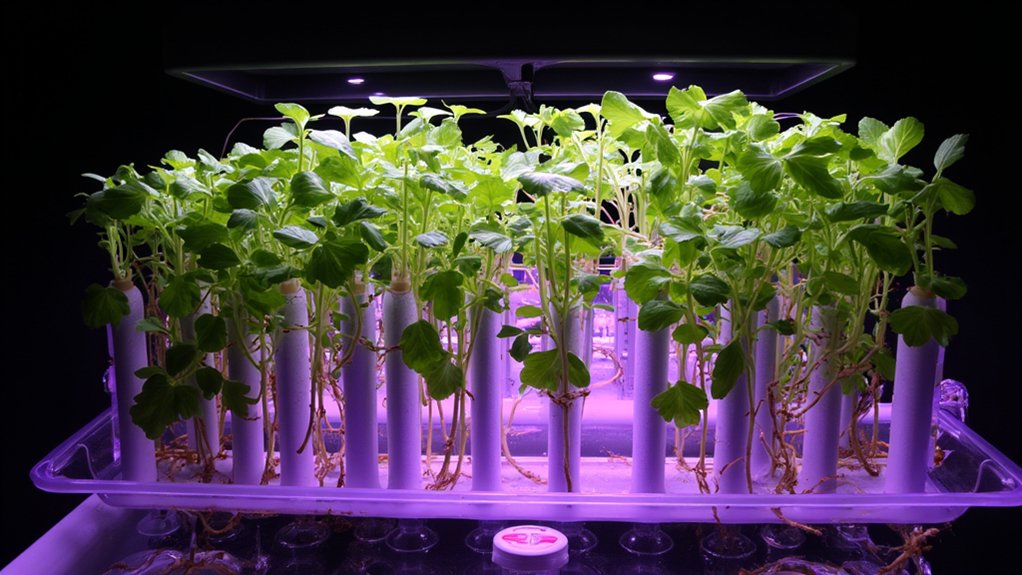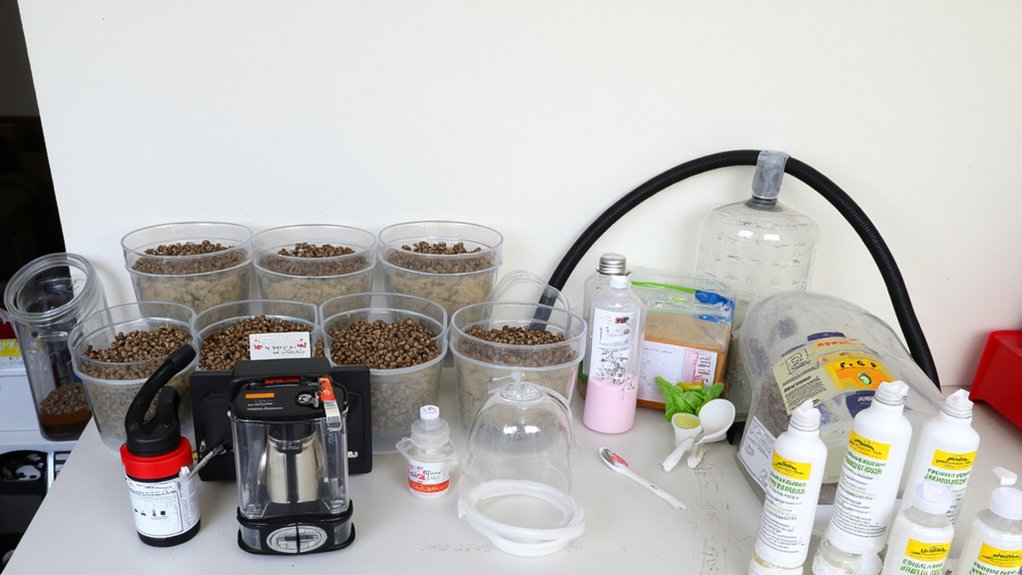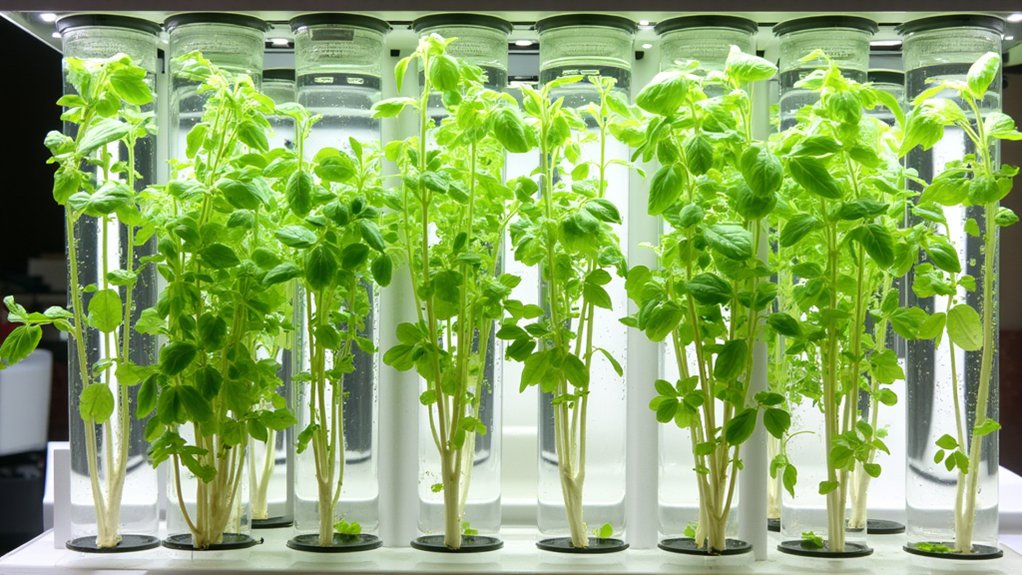Did you know that hydroponic plants grow up to 50% faster than their soil-based counterparts? You’re about to discover why this soil-free gardening method has become increasingly popular among both urban dwellers and traditional gardeners. Whether you’ve got a tiny apartment or a spacious garage, you’ll find that growing plants in water offers a practical, space-efficient way to produce fresh herbs and vegetables year-round. Let’s explore how you can set up your first hydroponic garden with just a few basic supplies.
Contents
- 1 What Is Hydroponics and How Does It Work?
- 2 Essential Equipment for Your First Hydroponic Setup
- 3 Choosing the Right Plants for Hydroponic Growing
- 4 Setting Up Your Basic Hydroponic System
- 5 Maintaining Proper Nutrient Levels and Ph Balance
- 6 Common Challenges and Simple Solutions
- 7 Harvesting and System Maintenance
What Is Hydroponics and How Does It Work?

Growing food without soil might sound like science fiction, but that’s exactly what hydroponics is all about. Instead of dirt, plants grow in a nutrient-rich water solution that delivers everything they need directly to their roots.
In a hydroponic system, you’ll suspend plants’ roots either in water or in a soilless medium like perlite or coconut coir. A pump circulates the nutrient solution, which contains precise amounts of essential minerals like nitrogen, phosphorus, and potassium.
Your plants can grow up to 50% faster than in traditional soil because they’re getting ideal nutrition without having to search for nutrients through soil.
Essential Equipment for Your First Hydroponic Setup

While building your first hydroponic garden might seem challenging, you’ll need just a few core pieces of equipment to get started. Your essential list includes a reservoir tank (15-30 gallons), growing containers, an air pump with stone, and a submersible water pump rated at 200-300 GPH.
You’ll also need a lighting system—LED grow lights work well for most beginners—and a timer to control light cycles. Don’t forget growing media like clay pebbles or rockwool, plus basic measuring tools: a pH meter and PPM/EC meter for monitoring nutrient levels.
For mixing nutrients, grab a set of measuring spoons and some clean mixing containers.
Choosing the Right Plants for Hydroponic Growing

Now that you’ve got your equipment ready, it’s time to select the best plants for your hydroponic system. Start with fast-growing leafy greens like lettuce, spinach, or kale, which typically mature in 30-45 days and thrive in water-based environments.
Herbs make excellent choices for beginners, particularly basil, mint, and cilantro. These plants adapt well to hydroponic conditions and provide continuous harvests when properly maintained at 65-75°F.
For more advanced growing, try compact varieties of tomatoes or peppers. These fruiting plants require additional support and 14-16 hours of daily light, but they’ll reward you with bountiful yields in 60-80 days.
Setting Up Your Basic Hydroponic System
Setting up a basic hydroponic system starts with three essential components: a reservoir, a growing tray, and a pump. You’ll need a 10-20 gallon container for your reservoir, which stores the nutrient solution that’ll feed your plants.
Place your growing tray, typically 4-6 inches deep, above the reservoir. Install the pump (minimum 100 GPH) at the reservoir’s bottom, connecting it to the growing tray with 1/2-inch tubing. Don’t forget to drill drainage holes in your tray.
Add growing media like clay pellets or rockwool, then connect your system to a timer. Set it to run 15 minutes every 2 hours during daylight.
Maintaining Proper Nutrient Levels and Ph Balance
Because successful hydroponic growing depends on precise nutrient concentrations, you’ll need to monitor your solution’s levels daily. Use a reliable pH meter to maintain readings between 5.5 and 6.5, adjusting with pH up or down solutions as needed.
Check your nutrient solution’s electrical conductivity (EC) using a TDS meter, aiming for 1.2-2.4 mS/cm depending on your plants. Top off depleted nutrients weekly, and completely replace your solution every 2-3 weeks to prevent mineral buildup.
Remember to calibrate your meters monthly using fresh testing solutions. If leaves yellow or brown, it’s often a sign your pH has drifted outside the ideal range.
Common Challenges and Simple Solutions
While hydroponic growing can be rewarding, you’ll likely encounter several common issues along your journey. Root rot, algae growth, and nutrient deficiencies are frequent challenges that can threaten your plants’ health.
If you notice brown, slimy roots, immediately trim affected areas and add hydrogen peroxide (1ml per liter) to your reservoir. For algae problems, cover all exposed water surfaces and guarantee your growing area stays dark between lights-on periods.
When leaves show spotting or discoloration, test your nutrient solution’s EC levels. You’ll need to adjust your nutrient mix according to manufacturer guidelines, usually maintaining 1.2-2.4 mS/cm depending on plant type.
Harvesting and System Maintenance
Once you’ve mastered managing common growing issues, let’s focus on the proper timing and techniques for collecting your harvest. Most leafy greens are ready when they reach 6-8 inches in height, while fruiting plants like tomatoes require monitoring for color and firmness.
Clean your system every 3-4 months by draining the reservoir, scrubbing surfaces with a 10% bleach solution, and thoroughly rinsing. Check and clean filters weekly, and replace nutrient solution every 2-3 weeks.
Don’t forget to sanitize your harvesting tools with rubbing alcohol. For continuous production, start new seedlings 2-3 weeks before harvesting mature plants to maintain your growing cycle.
